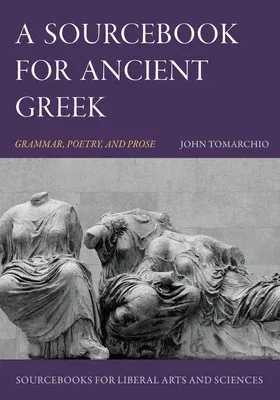This book was designed for students transitioning from the study of
Greek grammar to translation of texts. It was developed in classroom use
for classroom use, in the context of an integrated Great Books program
in liberal arts and sciences. It is meant for students not only of
Classics, but more, for students of Humanities interested in direct
engagement of primary sources. Each Greek text offered for translation
was chosen for its theoretical interest as well as the interest of its
Greek. The selections of Greek literature offered in this Sourcebook
are wide-ranging. The indisputable standard of excellence for
classicists is of course the Attic dialect of Athens in its glory.
However, this Sourcebook is meant for students of liberal arts and
sciences whose interests range far more widely. Thus, it does not
hesitate to extend not only backward to the archaic Greek of Homer, but
also forward to the koine Greek of the Alexandrian and Roman empires.
Greek works were chosen for being seminal to Western thinking today,
chosen to give students of Western arts and sciences introductions to
its Greek sources Naturally, Greek grammar is taught to the newcomer
analytically and sequentially, but the continuing student needs to
synthesize these distended enumerations of elements and principles.
Accordingly, grammatical synopses are not appended as reference tables
but placed front and center as objects of study. The grammar tables
offer synoptic views of integral parts of Greek grammar to show the form
and logic of the whole part of speech or part of a sentence. On the
basis of these tables, detailed grammatical notes and commentary
appended to Greek selections that follow are tailored for continuing
students.

